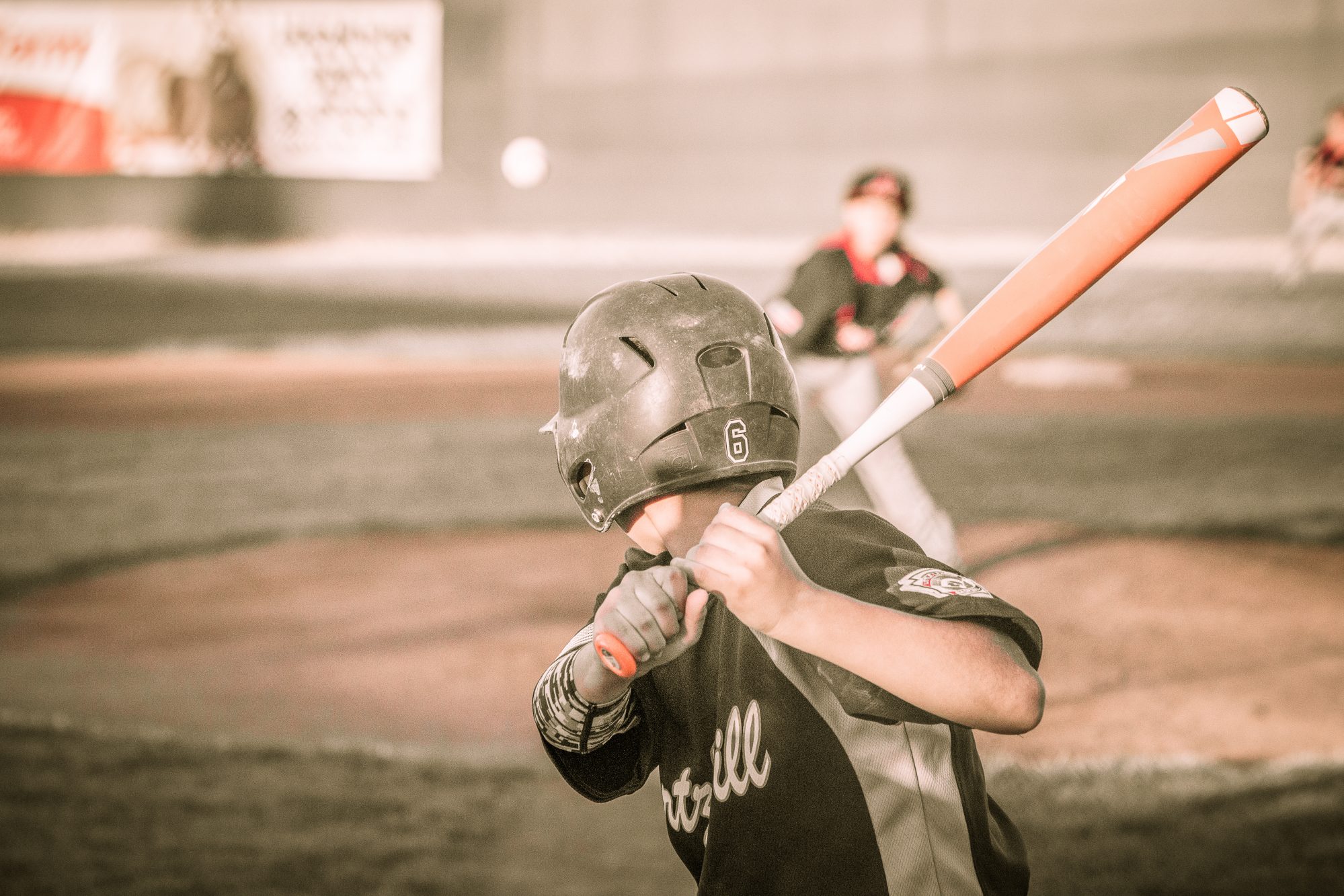Main Points
Utilize a two-strike hitting approach to enhance contact probability.
Stabilize the head during the swing for better ball tracking.
Limit swing movement for better accuracy and control.
Boost morale by practicing hitting pitches in different zones.
Implement drills and tips to keep focus on the ball during the swing.
Swing Into Action: Decreasing Strikeouts for Youth Players
Strikeouts can be a significant source of frustration for young baseball and softball players. However, with the right strategy and a bit of practice, we can convert those strikeouts into solid hits. Let’s look at the game plan for making those swings count!

Getting a Grip on Strikeout Stats
Before we get into the nitty-gritty, let’s take a moment to understand the statistics. Strikeouts are a part of the game, even for the most skilled players. However, if we’re noticing an increase in strikeouts, it might be a sign that we need to rethink our approach. The goal isn’t to eliminate strikeouts completely, but to reduce them.
First and foremost, we must comprehend the reasons behind strikeouts. Is it a matter of timing? Are the pitches too difficult to decipher? Or is the swing itself flawed? Determining this is the first step. Once we’ve identified the problem, we can begin to address the solution.
Building a Solid At-Bat from the Ground Up
Developing a good at-bat begins with the fundamentals: stance, grip, and concentration. Here’s where young players can begin to see immediate progress by incorporating baseball hitting drills designed for youth.
Stance: Choose a position that feels comfortable and balanced. Your feet should be shoulder-width apart, your knees slightly bent, and your weight evenly distributed. For more details on perfecting your stance, check out these baseball hitting techniques.
Grip: Grip the bat firmly, but don’t squeeze it too tightly. A tense grip can make your swing slower.
Focus: Always keep your eyes on the pitcher’s hand and the ball. The earlier you see the ball, the better your chances are of hitting it.
Now, let’s delve deeper into these points.
Boosting Confidence When Batting
Creating a Positive Attitude
When you’re at bat, confidence is everything. If you think you can hit the ball, you’re halfway to making it happen. So how do we create that confidence? Practice, positive reinforcement, and a bit of self-encouragement can go a long way.
As you approach the plate, banish any self-doubt. Instead of thinking, “What if I strike out?” tell yourself, “I can do this.” That kind of positive thinking can help you relax and keep your eye on the ball.
The Importance of Mental Imagery and Mental Readiness
Many top-notch batters often see their victories before they even occur. They imagine themselves striking the ball and making their way around the bases. This kind of mental readiness can elevate your self-assuredness and your game play. So, prior to the match, take a moment to shut your eyes and envision yourself making that flawless hit.
Visualization isn’t simply daydreaming; it’s a verified method that numerous professional athletes utilize. By envisioning a successful at-bat, you’re preparing your brain for the actual event.
Minor Adjustments to Minimize Strikeouts
Let’s get into the nitty-gritty of hitting. To cut down on strikeouts, you need to tweak your technique a bit. This doesn’t mean you have to completely revamp your swing; it’s about making minor modifications that can have a major impact. For more detailed guidance, check out these plate discipline and strike zone tips.
Concentrating on Batting Stance and Grip
Your swing’s foundation is your stance and grip. If they’re incorrect, everything else will be as well. Your stance should be comfortable and provide a stable base. When it comes to gripping, think of holding the bat like a bird: tight enough that it doesn’t escape, but not so tight that it’s harmed.
Drill Down: Dynamic Batting Practice Sessions
They say practice makes perfect, and that’s true. But it’s not enough to just swing the bat; you have to swing it correctly. During batting practice, concentrate on the quality of your swings, not just the number of times you swing. Pay attention to your form, and make each swing count.
Strategy for Two Strikes: Modifying the Swing
When it comes to two strikes, the tension is high. Here is where you have to be clever and adapt. Grasp the bat higher for better handling, reduce your swing to respond more quickly, and guard the plate. You don’t require a home run; you simply need to get the ball in play.
Training Exercises for Mastering the Swing
Having covered the psychological and technical facets, let’s delve into the exercises that can assist young athletes in enhancing their swings and decreasing strikeouts.

From Basics to Home Runs: Structured Tee Practice
Tee practice is an excellent method to improve your swing mechanics. It gives you the chance to concentrate on your stance, grip, and swing path without the distraction of the pitch. Try this straightforward tee drill: position the ball on the tee at varying heights and spots. This will help you get used to hitting pitches in different strike zones.
Winning with Soft Toss
Soft toss is an excellent drill to improve timing and hand-eye coordination. Have a partner gently toss the ball from the side, and concentrate on hitting it squarely. This drill is a fantastic way to practice tracking the ball and making contact.
Playing Against Live Pitching: Adjusting to the Speed of the Game
There’s no better way to get ready for a game than to face live pitching. Practice against pitchers who can throw all sorts of pitches at varying speeds. This will teach you how to modify your swing on the fly.
Getting a Grip on the Psychological Aspect
“90% of baseball is mental, the other half is physical.” – Yogi Berra. Understanding this can help players reduce strikeouts and improve their overall game.
Yogi Berra’s well-known saying underscores the significance of the psychological aspect of baseball. In order to cut down on strikeouts, you must be mentally strong and concentrated.
Dealing with Stress in High-Strikeout Circumstances
When the stress is high, it’s tempting to become rigid. But that’s when you need to be the most relaxed. Breathe deeply, step out of the box to regroup, and recall your practice. You can do this.
Guiding Passion: Considered Swing Choices
Being passionate at the plate is acceptable, but it must be guided passion. This implies swinging at excellent pitches and avoiding the poor ones. It’s all about making intelligent choices in the heat of the moment.
Helpful Coaching Advice for Youth Athletes
Coaching is about leading and supporting your team. Here are some ways you can help your players cut down on strikeouts and elevate their performance.
How to Give Positive Feedback
Feedback is important, but it needs to be done correctly. Always provide positive feedback. Highlight the player’s strengths, then give advice on how they can do better. Keep in mind, the objective is to encourage them, not discourage them.
Creating Unique Game Plans for Each Hitter
No two players are the same, so their game plans shouldn’t be either. Some players might need to work on their patience, while others might need to work on their swing. Customize your coaching to each player’s needs, and you’ll see them flourish.
And that’s it. With these tips and exercises, you’re on the right track to reducing strike outs and increasing confidence in your young players. Now, let’s go out there and play some ball!
Even the most energetic young athletes can be discouraged by strikeouts, but with the right coaching strategies, they can overcome this obstacle. Here are some tips and drills that can help youth baseball and softball players reduce strikeouts and boost their overall performance.
It is crucial to develop a two-strike hitting approach. When the count is not in their favor, players should prioritize making contact over hitting a home run. They can improve their chances of getting the ball in play by shortening their swing and slightly increasing their strike zone.
Creating Game Plans for Various Types of Hitters
Each player is different, and a strategy that works for one player may not work for another. Coaches should assess each player’s strengths and weaknesses to create individualized game plans. Here are a few strategies for different types of hitters:
For the player who tends to hit for power but often strikes out: Remind them that it’s more important to make contact with the ball than to try to hit it out of the park, especially when they have two strikes against them.
For the player who is good at making contact with the ball but has trouble with off-speed pitches: Help them improve their timing and ability to recognize different types of pitches so they can adjust their swing as needed.
For the player who tends to get nervous when they’re up to bat: Teach them relaxation and visualization techniques that they can use to help them stay calm.
FAQs
Here are some frequently asked questions about how to reduce the number of strikeouts in youth baseball and softball, along with straightforward, easy-to-understand answers.
What leads to strikeouts in youth baseball and softball?
There are numerous reasons why strikeouts occur, such as difficulty recognizing pitches, an ineffective swing, low self-esteem, and not being able to adapt to various pitches. Coaches can provide targeted training by pinpointing the problem.
“While strikeouts are a part of the game, they don’t have to be the defining part of a player’s experience. By focusing on the basics and maintaining a positive attitude, young athletes can learn to overcome this challenge.”
What are some ways coaches can help players who are afraid of striking out?
Coaches can help players who are afraid of striking out by creating a supportive team atmosphere, stressing the importance of trying hard instead of just focusing on the outcome, and giving helpful feedback. Applaud small wins and improvements, not just hits and runs.
What are some basic exercises that can enhance hand-eye coordination for hitters?
Enhancing hand-eye coordination is crucial for making regular contact with the ball. Below are some efficient exercises that can help hitters develop this skill. For a more comprehensive guide, explore our detailed article on youth baseball hitting tips.
Tee work: Try hitting the ball off a tee at various heights and angles to mimic different pitch locations.
Soft toss: A coach or teammate can softly toss the ball to the hitter from a short distance to work on timing and contact.
Pitch recognition drills: Use balls of different colors or balls with numbers on them to help hitters quickly identify pitches and decide whether to swing.
How critical is the mental game in reducing strikeouts?
The mental aspect of the game is just as crucial as the physical aspect when it comes to reducing strikeouts. Players who can stay focused, manage their emotions, and keep their confidence are more likely to be successful at the plate. Coaches should incorporate mental training into their practice routines.
Does changing a player’s stance really decrease the number of strikeouts?
Absolutely, sometimes a minor change in a player’s stance can make a big difference. Making sure the stance is comfortable, balanced, and allows for quick movements can help improve a player’s swing mechanics and reaction time.
How frequently should athletes rehearse their two-strike batting strategy?
Athletes should rehearse their two-strike batting strategy on a consistent basis, ideally during each batting practice. This allows them to familiarize themselves with the changes they need to make when they’re in a two-strike situation during a match.
How can video analysis help to decrease strikeouts?
Video analysis can be an effective method to decrease strikeouts. It gives players and coaches the ability to review swings in slow motion, pinpoint areas that need improvement, and monitor progress over time. By studying their at-bats, players can make the changes they need to their technique.
Leave a Reply